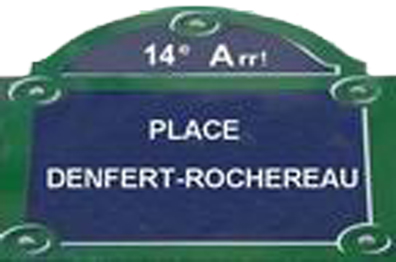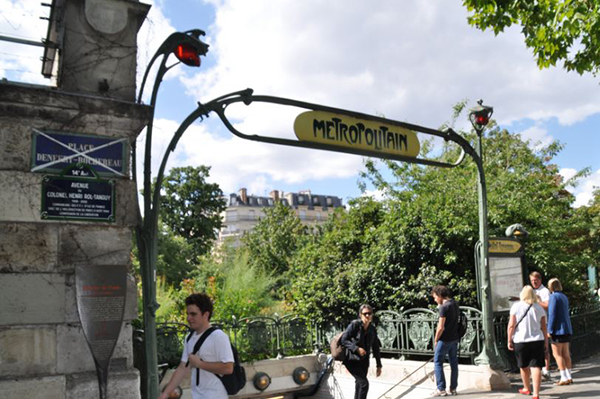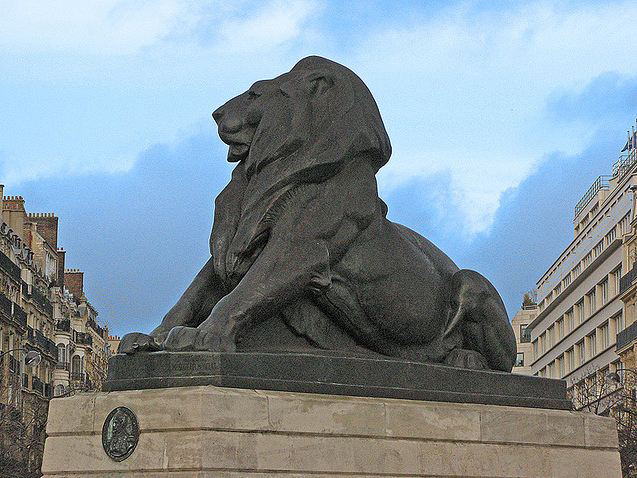How did those children come there? Perhaps they had escaped from some guardhouse which stood ajar; perhaps in the vicinity, at the Barrière d'Enfer, or on the Esplanade de l'Observatoire, or in the neighboring carrefour, dominated by the pediment on which could be read: invenerunt parvulum pannis involutum (they discovered the infant wrapped in swaddling clothes) . . .
— Victor Hugo
Les Misérables
Before leaving Paris, I would like to take one last look around the historical neighborhood of Place Denfert-Rochereau
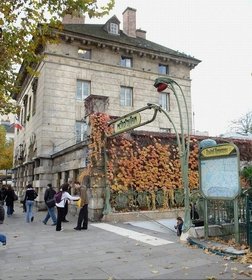 where miserable waifs gathered for the
barricaded insurrections of 1830, 1832, 1848, 1870, and 1944
where miserable waifs gathered for the
barricaded insurrections of 1830, 1832, 1848, 1870, and 1944
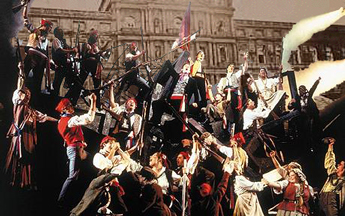 ,
and the importance of which I was totally ignorant during my stay there.
Originally, before the French Revolution, Denfert-Rochereau was a passage through the ancient city wall where
farmers paid taxes
,
and the importance of which I was totally ignorant during my stay there.
Originally, before the French Revolution, Denfert-Rochereau was a passage through the ancient city wall where
farmers paid taxes
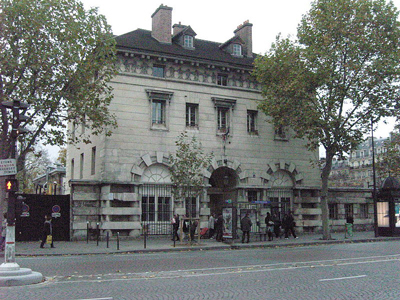 to bring their produce to the Paris market.
Thus, the name known by farmers:
Place d'Enfer—the Gates of Hell
to bring their produce to the Paris market.
Thus, the name known by farmers:
Place d'Enfer—the Gates of Hell
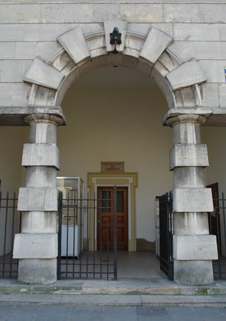 .
Two toll houses were erected in 1789, designed by
Claude Nicolas Ledoux
.
Two toll houses were erected in 1789, designed by
Claude Nicolas Ledoux
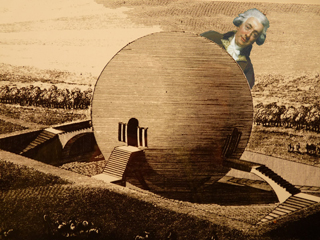 ,
an architect both classical and futuristic,
at what is now the intersection of Place Denfert-Rochereau and Avenue du Colonel-Henri-Rol-Tanguy,
which is only one block long, a section of the longer Avenue du Général Leclerc.
Colonel Tanguy
,
an architect both classical and futuristic,
at what is now the intersection of Place Denfert-Rochereau and Avenue du Colonel-Henri-Rol-Tanguy,
which is only one block long, a section of the longer Avenue du Général Leclerc.
Colonel Tanguy
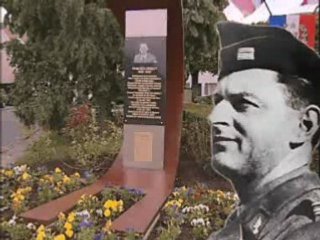 and General Leclerc
and General Leclerc
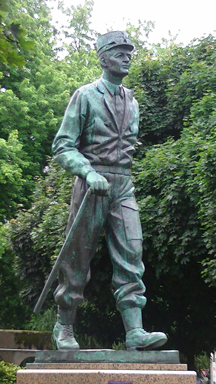 were leaders in the French Resistance in WWII.
Warriors require monuments, parks, and avenues,
and come in all shapes and sizes —
architects, scientists
were leaders in the French Resistance in WWII.
Warriors require monuments, parks, and avenues,
and come in all shapes and sizes —
architects, scientists
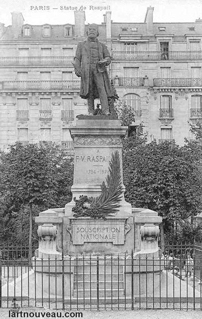 ,
theologians, artists
,
theologians, artists
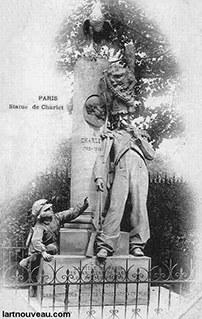 ,
and even lawyers
,
and even lawyers
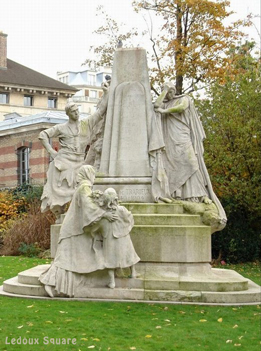 .
.
This one block contains an entrance to the Metropolitain Underground
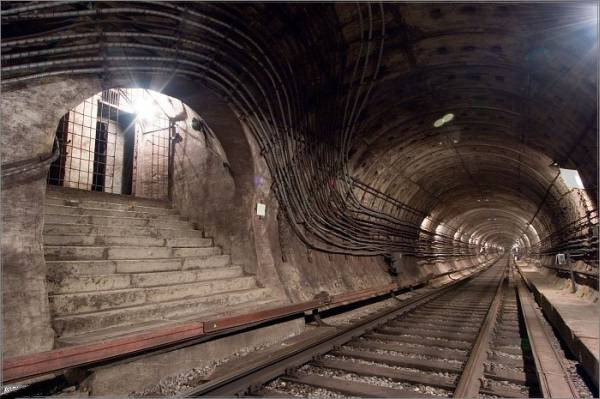 next to the west pavilion and an entrance to the
Paris Catacombs
next to the west pavilion and an entrance to the
Paris Catacombs
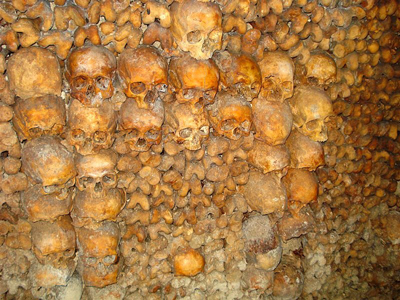 next to the east pavilion.
One side entombs multitudes departed; the other entombs multitudes departing.
next to the east pavilion.
One side entombs multitudes departed; the other entombs multitudes departing.
Immediately north beyond Les Catacombes at the start of Rue Froidevaux, is the Lion of Belfort guarding the city gates. This bronze version is one third the size of the one near the German border in Belfort, France.
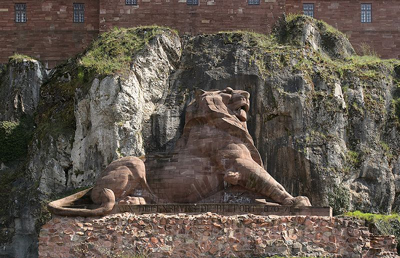 It was designed by Frederic Bartholdi
It was designed by Frederic Bartholdi
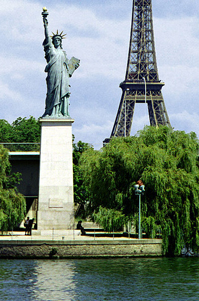 ,
sculptor of the Statue of Liberty in New York.
The lion commemorates
Colonel Pierre Philippe Denfert-Rochereau,
,
sculptor of the Statue of Liberty in New York.
The lion commemorates
Colonel Pierre Philippe Denfert-Rochereau,
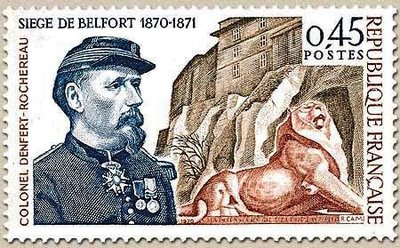 commander of French forces during the Seige of Belfort in 1870 where he held off 40,000 Prussian soldiers for 103 days with 15,000 men, of which only 3500 were actual soldiers. Stats!
The names d'Enfer and Denfert both sound alike in French,
so it was perfectly logical to place the lion here to protect future Parisians against subsequent invading huns and hippies from hell.
There is also a version of the
Lion in Montreal
commander of French forces during the Seige of Belfort in 1870 where he held off 40,000 Prussian soldiers for 103 days with 15,000 men, of which only 3500 were actual soldiers. Stats!
The names d'Enfer and Denfert both sound alike in French,
so it was perfectly logical to place the lion here to protect future Parisians against subsequent invading huns and hippies from hell.
There is also a version of the
Lion in Montreal
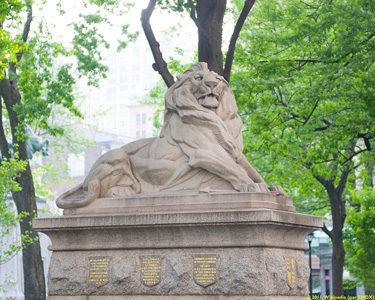 ,
presumably to protect Canadians from invading Americans. Hell can be anywhere, but history is everywhere.
,
presumably to protect Canadians from invading Americans. Hell can be anywhere, but history is everywhere.
